A Comprehensive Look at the World of Sushi:
Sushi, a culinary art originating from Japan, has evolved into a global phenomenon, captivating the taste buds of millions. We’re delving into the intricate world of sushi, exploring its various types, historical roots, and its cultural impact. From traditional nigiri to the innovative sushi rolls of American and Mexican cuisine, we embark on a flavorful journey that transcends borders.

For books on Sushi and Sushi History, visit ShoplyJapan.
Sushi History – Fermentation. A celebration:
The intricate evolution of sushi can be traced back to its roots in Southeast Asia, where the earliest form of this culinary art emerged in the guise of lacto-fermented freshwater fish, which was mentioned above and known in Japan as “narezushi”. This ancient practice originated in Southeast Asian countries such as Laos, Cambodia, Thailand, and Myanmar, marking the initial chapter in the sushi saga.

The narrative of sushi’s history extends further with the involvement of Ancient China, where early forms of this culinary art were first documented around the 4th century. This documentation coincided with the migration of Han Chinese communities southward, adopting and incorporating culinary practices from Southeast Asians during the Neolithic period. The exchange of ideas and techniques between these cultures laid the foundation for the diverse array of sushi we know today.
As sushi’s journey unfolded, it found its way to Japan, undergoing significant transformations that would shape its identity. One noteworthy variation, Funazushi from Shiga Prefecture, gained notoriety for its distinct pungency, adding a layer of complexity to the evolving art of sushi. The migration of sushi to Japan marked the beginning of a culinary odyssey that would span centuries, blending cultural influences and culinary innovations.
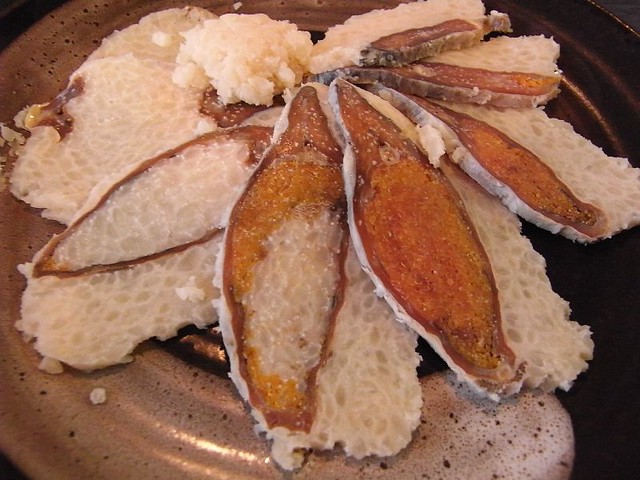
Beyond Japan and China, the legacy of fermenting fish in rice persisted in various Southeast Asian countries, including the Philippines, Indonesia, Malaysia, Thailand, and Korea. Each region contributed its unique twist to the fermentation process, resulting in a rich tapestry of sushi-like dishes that showcased the adaptability of this culinary practice across different cultural landscapes.
Evolution of Sushi – Edo Period Innovations:
During the Edo period in the early nineteenth century, a culinary revolution unfolded in Japan, transforming the traditional sushi landscape. The traditional hakozushi, which was crafted by pressing vinegared rice into a rectangular box, underwent a paradigm shift in Edo, where chefs embraced nigirizushi (nigiri sushi). Edo nigirizushi featured elements akin to today’s Edomae sushi lineup, including tamagoyaki (rolled omelet), shirauo (icefish), tuna sashimi, kohada (gizzard shad), and sweet anago (conger eel). The genius behind this sushi evolution was credited to sushi chef Hanaya Yohei, who, around 200 years ago, invented the now iconic nigiri form.

Yohei’s influence extended beyond innovation; he pioneered fast-food sushi, introducing a yatai (food stall) business model reminiscent of contemporary conveyor-belt sushi restaurants. This fast-food approach and delivery services laid the groundwork for the enduring popularity of sushi as a quick and accessible culinary delight. In the bustling streets of Edo, sushi stalls flourished, allowing customers to choose their favorite toppings, mirroring the interactive experience found in modern conveyor-belt sushi restaurants. The rich history of sushi during the Edo period highlights not only its culinary evolution but also its early adoption of fast-food and delivery services, providing a fascinating glimpse into the roots of this iconic Japanese dish.
Sushi in Popular Culture:
Sushi has seamlessly woven itself into the fabric of popular culture, transcending its status as a mere culinary delight to become an enduring symbol of sophistication and culinary artistry. Its influence extends beyond the dining table, making significant appearances in movies, television shows, and the vast realm of social media. This pervasive presence has elevated sushi to more than just a meal; it has become an immersive experience that captivates the senses.
In the realm of cinema, sushi often plays a symbolic role, representing elegance, refinement, and a culinary journey. Whether featured in scenes depicting upscale dining experiences or as a central element in cultural narratives, sushi has become a visual cue for the confluence of taste and aesthetic appeal.

Television shows, particularly those centered around culinary exploration and gastronomic adventures, frequently showcase the intricate art of sushi-making. Chefs and enthusiasts alike navigate the delicate dance of crafting nigiri and rolling maki, bringing the beauty of sushi preparation into the living rooms of audiences worldwide. Such representations contribute to the popular perception of sushi as not just a dish but an art form.
In the age of social media, sushi has found a vibrant platform for expression. Influencers and celebrities frequently share their sushi indulgences with aesthetically pleasing photos and videos. The visual allure of perfectly arranged sashimi, meticulously rolled maki, and the vibrant hues of various ingredients has turned sushi into a shareable experience, fostering a global community that appreciates the artistry and cultural richness behind each piece.
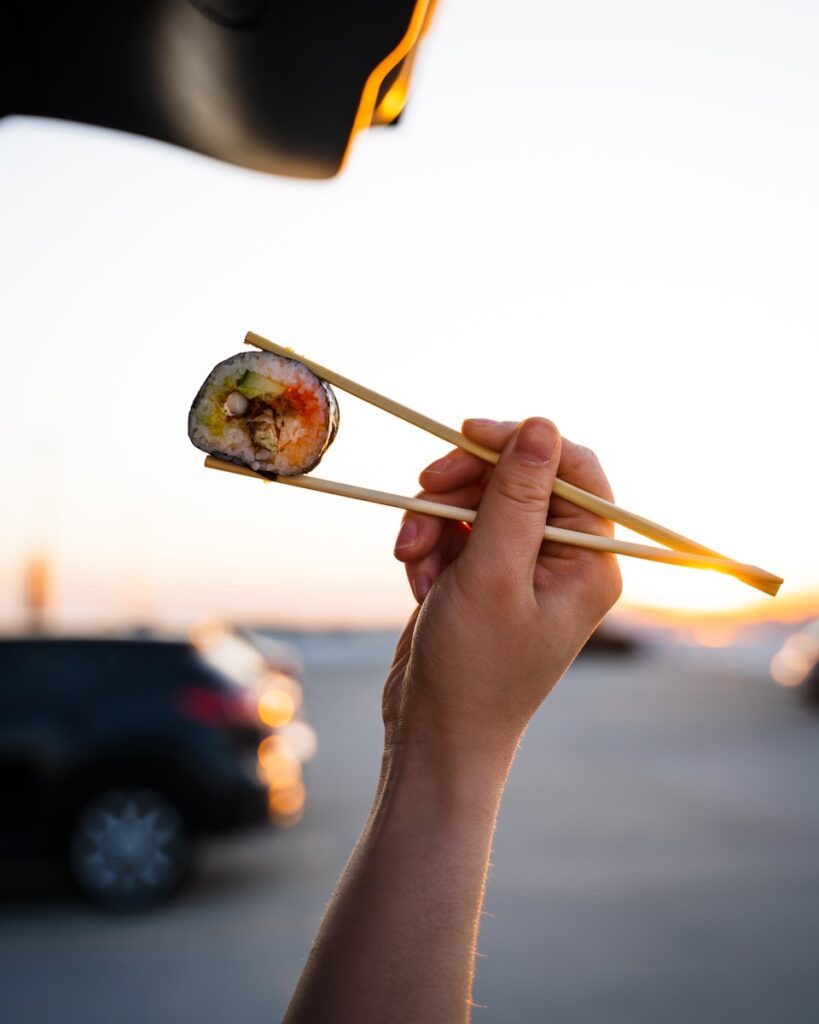
Influencers and celebrities play a pivotal role in shaping cultural trends, and their affinity for sushi has further solidified its status as a global culinary icon. From high-profile events to everyday cravings documented on Instagram, sushi’s presence in celebrity circles adds an aspirational dimension to its image, encouraging a broader audience to engage with and appreciate this culinary phenomenon.
In essence, sushi’s integration into popular culture has transformed it into more than a dish; it has become a cultural touchstone that resonates across diverse mediums, inviting individuals to partake in an immersive journey of taste, art, and global culinary appreciation.
For home sushi making tools direct from Japan, visit Shoply Japan!
Culinary Fusion and Global Harmony:
Sushi, a culinary marvel originating in Japan, has transcended cultural boundaries, becoming a global phenomenon that celebrates both tradition and innovation. This journey into the hearts and taste buds of people worldwide has fostered a rich cultural exchange, creating a shared culinary experience that unites diverse backgrounds.
The accessibility of sushi, ranging from traditional nigiri to inventive fusion rolls, has turned it into a culinary marvel that knows no cultural or geographical constraints. Sushi restaurants worldwide now serve as vibrant hubs of cultural diversity, providing patrons with an opportunity to delve into the intricacies of Japanese culinary traditions while embracing the local influences that shape each unique dining experience.
Sushi’s evolution goes beyond conventional forms, entering a realm of fusion and creativity led by chefs and enthusiasts. This global influence has given rise to diverse and inventive sushi creations that not only showcase the adaptability of sushi but also serve as a testament to the dynamic interplay between tradition and innovation.
As sushi continues to conquer hearts globally, it acts as a bridge, connecting people from various backgrounds in a shared celebration of culinary diversity. Sushi has become a symbol of global harmony, where the meticulous craft of Japanese culinary traditions meets the vibrant tapestry of local influences, offering a unique and inclusive dining experience for patrons worldwide.
Diversification of Sushi – Fusion and Innovation:
In various parts of the world, sushi has been integrated into different culinary traditions, giving rise to unique fusion creations. In the United States, the fusion of Japanese and American flavors is exemplified by rolls like the California roll and the Philadelphia roll. The California roll, featuring avocado, crab, and cucumber, challenges traditional ingredients while maintaining a sushi essence. Similarly, the Philadelphia roll, incorporating smoked salmon and cream cheese, showcases how diverse culinary influences can merge to create delectable results.
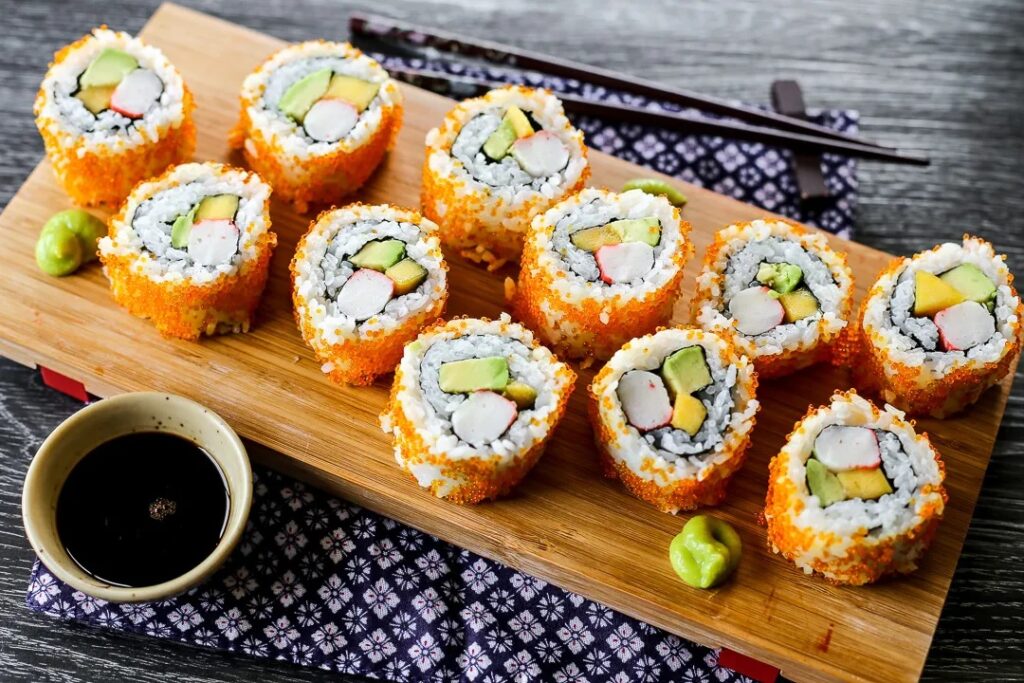
The Americanization of sushi introduced rolls like the spicy tuna/salmon roll, deep-fried sushi roll, and the crunchy roll, emphasizing innovation and fusion. The advent of spicy tuna and spicy salmon rolls highlights a departure from traditional Japanese flavors. These rolls often incorporate spicy mayo or Sriracha, catering to a taste for heat that may not align with the traditional palate. Additionally, the introduction of deep-fried sushi rolls adds a crispy texture, deviating from the customary raw fish and rice combination. Such innovations demonstrate the dynamic nature of sushi, adapting to local tastes while pushing culinary boundaries.
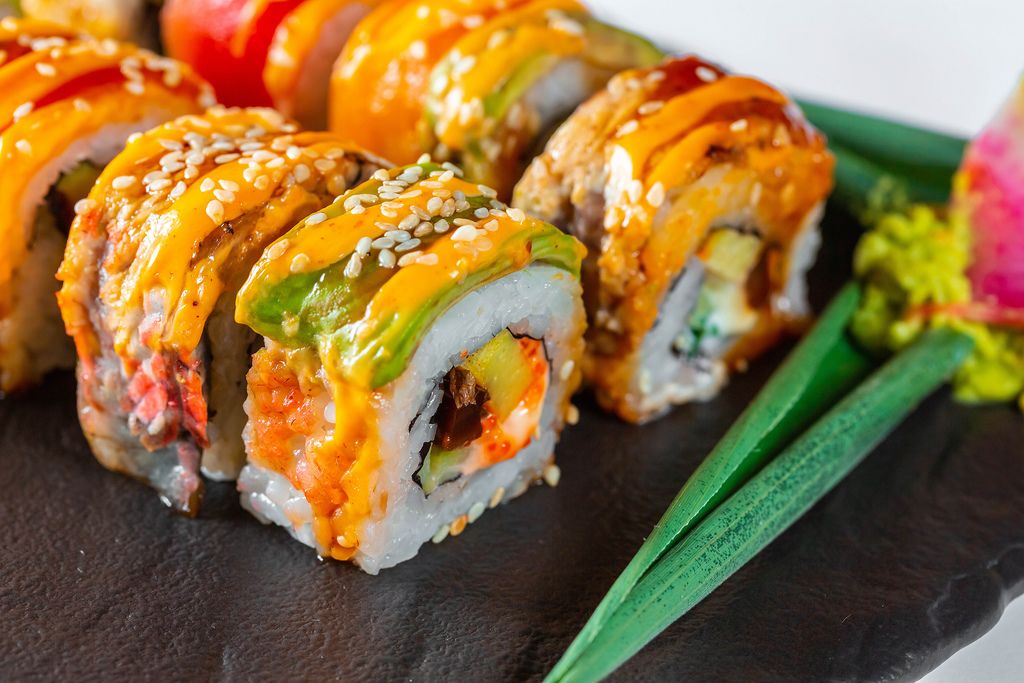
Beyond the United States, sushi has undergone fascinating adaptations in other cultural contexts. In Mexico, the emergence of “Sinaloan sushi” represents a cross-cultural fusion that originated in Culiacán, Sinaloa, before making its way to Los Angeles. This unique variation often includes elements of traditional Mexican cuisine, resulting in a harmonious blend of flavors. The sushi burrito, a larger and heartier version of the traditional roll, is a prime example of this fusion, reflecting the influence of Mexican culinary traditions on the art of sushi.
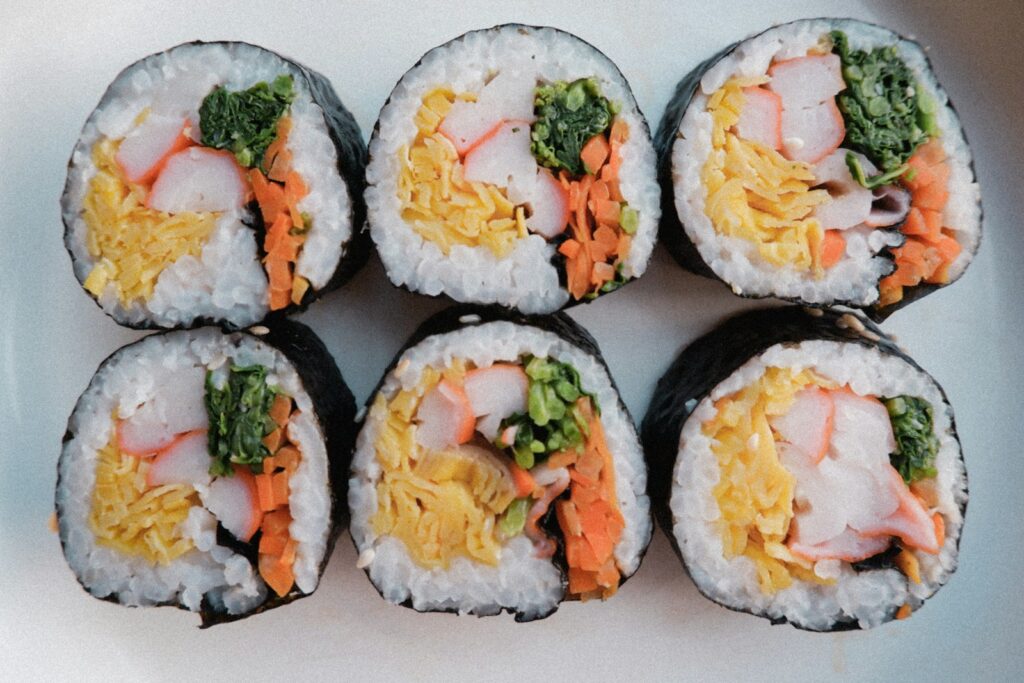
In South Korea, sushi takes on a distinct form known as gimbap. While similar to traditional sushi rolls, gimbap features ingredients such as pickled radish, spinach, and seasoned beef wrapped in seaweed and rice. This Korean adaptation showcases the versatility of sushi, as it seamlessly integrates with local flavors and ingredients. The fusion of sushi with various culinary traditions worldwide emphasizes its role as a dynamic and evolving gastronomic experience, blending Japanese authenticity with global creativity.
Sushi “Police” – Preserving Authenticity:
In the early 2000s, Japan found itself grappling with the global proliferation of what it deemed inauthentic sushi. Alarmed by the rising number of restaurants claiming to serve Japanese cuisine, the government, specifically the Ministry of Agriculture, Forestry, and Fisheries, decided to take decisive action. This led to the initiation of the controversial “Sushi Police” initiative, a venture aimed at certifying authentic Japanese restaurants overseas, ensuring the preservation of the nation’s culinary traditions.
The inception of the “Sushi Police” in the early 2000s raised eyebrows and garnered attention both domestically and internationally. The Ministry of Agriculture, Forestry, and Fisheries embarked on an ambitious journey to establish a ‘Sushi Police’ force, with plans to set up 10 overseas branches. The first branch was established in Los Angeles, reflecting the global reach of this culinary endeavor.
The goals of the “Sushi Police” were multifaceted, aiming not only to certify Japanese restaurants abroad but also to address concerns related to the reputation of Japan’s national cuisine. The All-Japan Sushi Federation (JSF), a key player in this initiative, highlighted the importance of promoting hygiene in foreign sushi establishments. One leading sushi chef involved in devising the certification system expressed concerns about practices overseas, stating, “Most restaurants overseas make sushi dishes in the same kitchen as those preparing meat.”

As the campaign unfolded, various media outlets reported on Japan’s efforts to regulate and certify its beloved culinary export. The Japanese Ministry of Agriculture, along with a non-governmental group of experts, launched a campaign allowing Japanese restaurants in various countries to certify their food as authentic, proudly displaying the Japanese Seal of Approval. This move was seen as an earnest attempt to maintain the integrity of Japanese cuisine on the global stage.
However, the “Sushi Police” initiative faced its fair share of criticism and skepticism. The global inspection and certification mission, intended to address complaints about the quality of Japanese cuisine abroad, raised questions about cultural sensitivity and culinary diversity. Japanese travelers abroad were reportedly returning home with complaints about soggy seaweed, limp noodles, and sushi with unconventional toppings. This prompted the Agriculture Ministry to prepare for a comprehensive inspection and certification process for Japanese restaurants worldwide.
The irony of Japan’s “Sushi Police” initiative became apparent when considering the country’s own handling of foreign cuisines. For example, would the Italian government reciprocate by inspecting Japan’s “Italian” food for authenticity, including beloved dishes like pasta and pizza, which often contained ingredients like seaweed, fish eggs, and generous dollops of mayonnaise? There is also Japan’s limited interpretation of the term “pasta,” typically only referring to spaghetti, to look at when considering the potential for misunderstandings in cross-cultural culinary assessments.

This chapter in the history of sushi serves as a reminder of the delicate balance between preserving cultural authenticity and embracing the global fusion of culinary traditions. While Japan sought to protect the integrity of its iconic dish, the “Sushi Police” initiative sparked discussions about the broader implications of regulating and certifying food on a global scale.
Sushi stands as a testament to the rich tapestry of Japanese culinary artistry, reflecting cultural exchange and adaptation from traditional nigiri to contemporary rolls. Exploring its types, history, and global impact reveals a profound appreciation for the delicate balance of flavors, artful presentation, and embedded cultural significance. Inviting individuals worldwide to savor a piece of Japan’s culinary heritage, sushi transcends borders.
For fun sushi toys for kids, visit Shoply Japan!
Continuing to captivate the culinary landscape, sushi showcases diverse forms, a rich history, and global influence. From traditional nigiri to innovative fusion creations, it represents a harmonious blend of flavors, cultures, and culinary artistry. Celebrating sushi’s global phenomenon, we emphasize the importance of preserving its authenticity while embracing dynamic adaptations that reflect evolving culinary traditions. Whether enjoyed in a traditional sushi bar, a conveyor belt sushi restaurant, or a fusion eatery, sushi remains a symbol of cultural exchange and universal appreciation for exceptional food.








